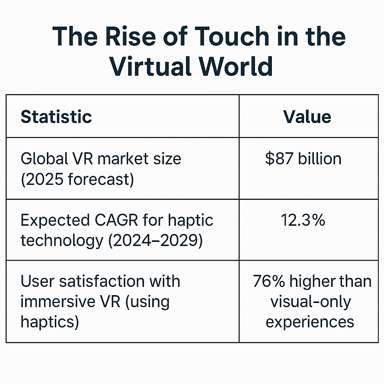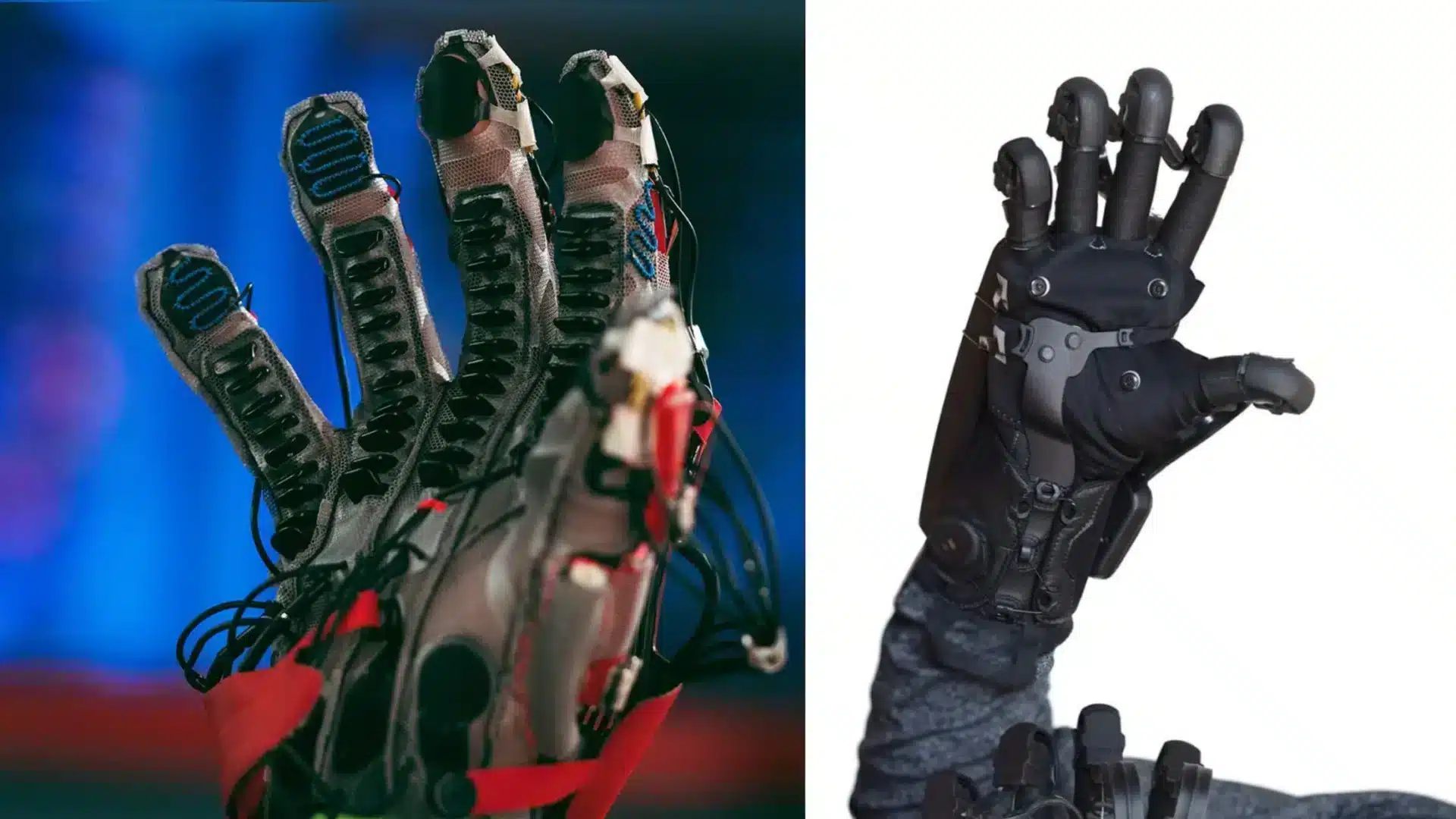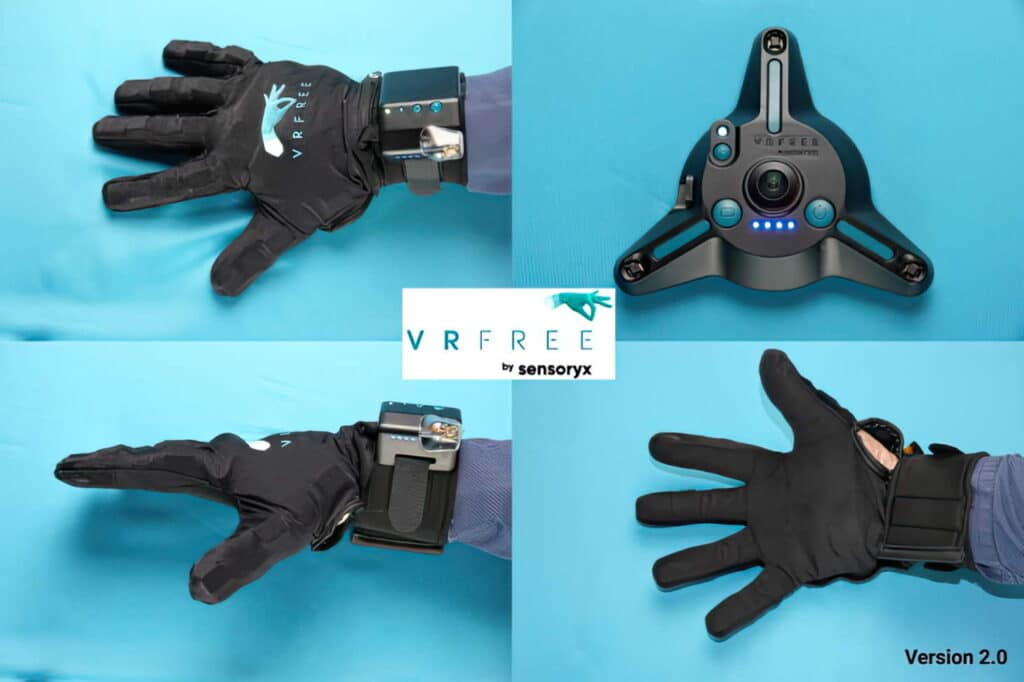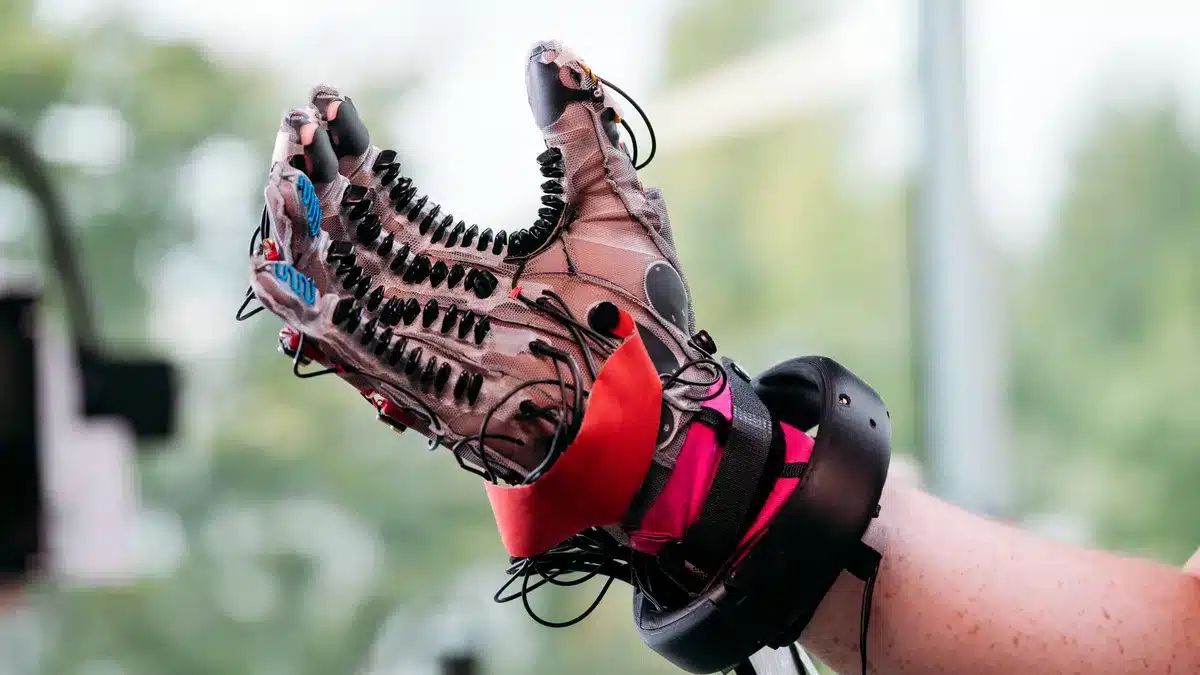Touch. The sense of touch stands as one of our basic human capabilities which creates revolutionary ways to experience virtual reality (VR). Simulation-to-immersion integration requires users to experience feelings within virtual environments which improves the reality’s authenticity. Haptic gloves serve as the top technology that allows users to extend their hands into digital environments. These gloves deliver unmatched realism and feedback for gamers alongside medical students designers and members of enterprise-level simulation.

We will examine the leading VR haptic gloves of 2025 throughout this blog article and their revolutionary features. Let’s dive in.
1. HaptX Gloves G1: Industrial Precision Meets Realism
Best For: Enterprise training, robotics, and advanced simulations
The experience of learning surgery by watching videos seems impossible to comprehend. Users receive tactile feedback of tissue resistance during cutting operations when they use HaptX products.
HaptX G1 possesses more than 130 tactile actuators which work with a microfluidic system to offer touch-based communication for authentic weight and texture perception and resistance analytics. This glove performs actual reproduction instead of simulation.
Pros:
Extremely realistic haptic feedback
High-resolution force feedback
Enterprise-grade durability
Cons:
Expensive
Requires tethered setup
👉 Learn more from HaptX
2. SenseGlove Nova: Lightweight & Wireless for Professionals
Best For: Virtual training, automotive design, healthcare
HaptX operates like a tank compared to SenseGlove Nova’s racing car design. Nova was designed to facilitate simple use while being portable through its combination of force-feedback and vibration motor technology.
The device functions as your primary virtual reality system to perform different tasks from training simulations to design work and collaborative meetings to product evaluations.
Key Features:
Wireless and lightweight
Compatible with Oculus Quest and other leading headsets
Affordable enterprise pricing
Use Case Analogy: It’s like going from typing on a glass screen to a mechanical keyboard — your hands know the difference, and so does your brain.
👉 Explore SenseGlove Nova
3. bHaptics TactGlove: Consumer-Level Haptics for Everyone
Best For: Gaming, content creation, casual VR users
Finally, haptics you can afford. The bHaptics TactGlove makes accessible entry-level haptic VR available to consumers at an affordable price.
Users can experience finger-tracking alongside vibration feedback through this product which suits both VRChat and Meta Quest 2 and immersive independent game sessions. This device strikes an ideal balance between prices and functionality although it doesn’t match the accuracy of professional haptic gloves.
Fun Fact: You can feel a virtual cat purring as you pet it in VRChat. Yes, that’s a thing now.
👉 Visit bHaptics
4. Meta Haptic Glove (Prototype): The Future Is Feeling

Best For: Research & Development, Meta ecosystem users
Meta (formerly Facebook) develops a glove which reproduces all textures through pneumatic actuators and soft robotic technology.
The revolutionary glove remains unavailable to the public while expected to transform Meta’s metaverse vision. The technology resembles what you might see in Ready Player One yet operates in the actual world.
Tech Highlights:
Soft actuators mimic muscle movement
Electrical stimulation for advanced sensations
Deep integration with Meta Quest platform
Keep your eyes on this one — it could redefine consumer haptics in the next 2 years.
5. Sensoryx VRfree® Gloves: Wireless Precision for Professionals

Best For: Developers, training simulations, medical applications
The VRfree® Gloves developed by Sensoryx represent among the initial wireless hand-tracking glove solutions that operate independently from base stations found in Vive or Oculus setups.
The gloves include fundamental IMU-based tracking technology with 11 hand-mounted sensors to track all finger joints with real-time low-latency precision. These gloves create a perfect solution for VR mobile systems and have promising applications across telemedicine and educational and training establishments.
The key feature of VRfree® consists of its easy plug-and-play functionality which simplifies installation even for people who are unfamiliar with VR haptic systems. These devices lack force feedback capabilities yet their precise tracking performance and portable design appeal to professionals looking for quick setup solutions.
Use Case: A remote surgical training program where a medical student practices hand positioning in real time, all through a wireless, portable glove system.
Indian innovation called TwinReality emerged domestically during this period. The distinguishing feature of TwinReality stems from its ability to provide open SDK while prioritizing collaborative prototyping solutions. The system allows anyone to design their own virtual experiences with complete control over accuracy.
Use Case: With TwinReality educators can now build affordable virtual chemistry labs that allow students to experience holding beakers while pouring liquids.
Conclusion: The Touch Revolution Has Begun
Virtual reality technology will shift beyond mere visual fidelity towardtoBeFalsy-based immersive experiences which recreate the sensation of occupying digital environments. Haptic gloves enable both experienced gamers and professional organizations to achieve real VR interactions no matter their level of involvement.
To recap, here are the top 5 VR haptic gloves:
HaptX G1 for unmatched realism
SenseGlove Nova for practical enterprise training
bHaptics TactGlove for consumer-friendly access
Meta Haptic Glove for cutting-edge innovation
VRfree® Gloves for customizable and affordable development
As VR continues to grow, integrating haptics will no longer be optional — it’ll be essential. Want to explore more? Start with the one that fits your world (and your budget).


